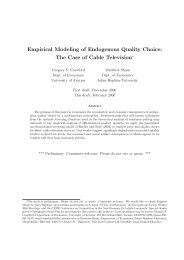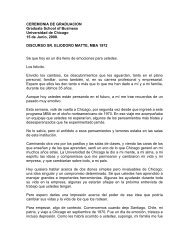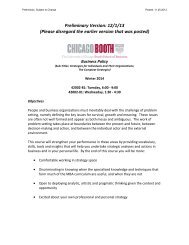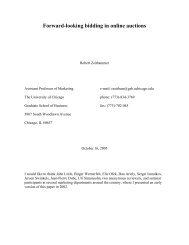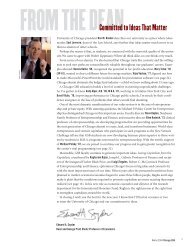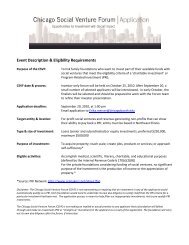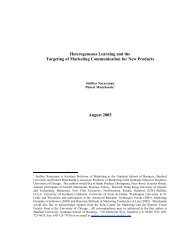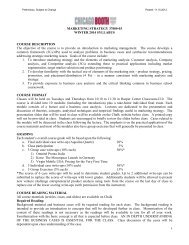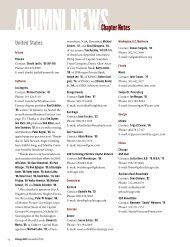Forward-Looking Betas - The University of Chicago Booth School of ...
Forward-Looking Betas - The University of Chicago Booth School of ...
Forward-Looking Betas - The University of Chicago Booth School of ...
Create successful ePaper yourself
Turn your PDF publications into a flip-book with our unique Google optimized e-Paper software.
academic literature remains divided about the performance <strong>of</strong> the CAPM, and that the CAPMis still the factor model most <strong>of</strong>ten used in financial practice. In our empirical application, theCAPM performs relatively well.<strong>The</strong> computation <strong>of</strong> betas for the CAPM is an issue that is just as hotly debated as the choice<strong>of</strong> factor model. In several classic applications <strong>of</strong> the CAPM, betas were computed by runninga regression <strong>of</strong> stock returns on market returns, using returns for the past sixty months. 7 Thistechnique is still used in many academic and practitioner approaches to beta estimation. <strong>The</strong>choice <strong>of</strong> sixty lagged returns reflects the tension implicit in using historical returns to computebetas: ontheonehandonewouldliketouseaslongahistoryaspossibletoobtainmorepreciseestimates, but on the other hand one does not want to use older returns data because it is likelythat the beta changes over time.Over the last two decades, the modeling <strong>of</strong> the time-variation in the market beta has takencenter stage in the CAPM literature. <strong>The</strong>re is by now widespread consensus that beta istime-varying, although it is less clear how much this time-variation helps the model’s empiricalperformance out-<strong>of</strong>-sample. A number <strong>of</strong> different econometric techniques are available to modelthe time-variation in the beta. 8While modeling the time-variation in the beta is helpful, it does not address the criticism thatthis type <strong>of</strong> measurement is backward-looking, much like the simple regressions that use sixtymonths <strong>of</strong> lagged returns. Many applications <strong>of</strong> factor models, such as the cost <strong>of</strong> capital, areinherently forward-looking. Ideally we want an estimate <strong>of</strong> the future beta. <strong>The</strong> computation <strong>of</strong>a historical beta, regardless <strong>of</strong> whether it is time-varying or not, is a second-best solution that weresort to because the computation <strong>of</strong> genuinely forward-looking betas is thought to be difficultor impossible. This paper takes a different approach: we argue that it is possible to computeforward-looking betas, using the forward-looking information embedded in option prices.<strong>The</strong> idea <strong>of</strong> retrieving forward-looking betas from options data is not entirely new. Siegel(1995) proposes the creation <strong>of</strong> a new derivative, called an exchange option. This option wouldallow the holder to either purchase the underlying stock at the strike price, or exchange theoption for a certain amount <strong>of</strong> the index. Siegel (1995) then derives a formula for calculatingthe beta implicit in this contract using at-the-money prices for this exchange option, as well asprices for the corresponding stock and index option contracts. <strong>The</strong> “implicit” beta for stock i isKorajczyk (1995) and MacKinlay (1995).7 See for instance Black, Jensen and Scholes (1972), Fama and MacBeth (1973) and Fama and French (1992,1993, 1996).8 On modeling time-variation in betas, see Bollerslev, Engle and Wooldridge (1988), Blume (1971, 1975),Bos and Newbold (1984), Cochrane (2001), Ferson (1995, 2004), Ferson and Harvey (1999), Ferson, Kandeland Stambaugh (1987), Ghysels (1998), Harvey (1989) and Jagannathan and Wang (1996). Companies such asBARRA provide investors and risk managers with time varying estimates <strong>of</strong> market betas.5



